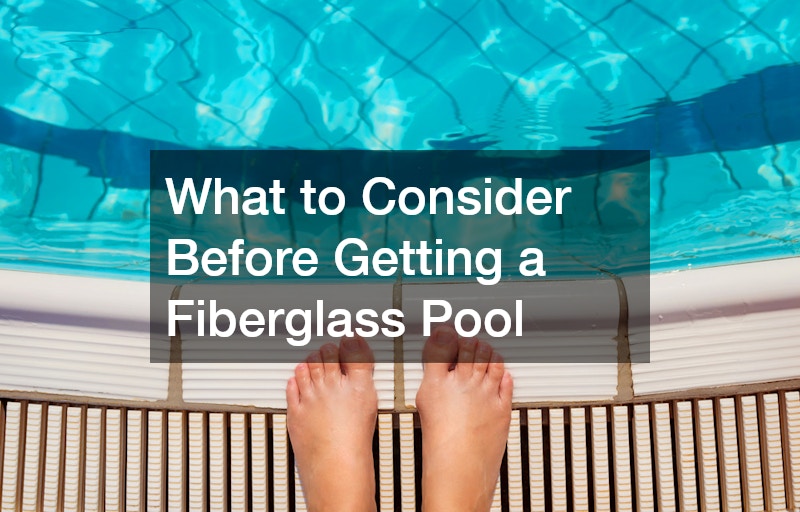
In recent years, fiberglass pools have surged in popularity due to their modern aesthetics and ease of maintenance. Before committing to installation, potential pool owners must make informed decisions to ensure long-term satisfaction and avoid unforeseen expenses.
The initial cost of a fiberglass pool is influenced by several factors, including the size and complexity of the design. Additionally, installation fees can vary significantly depending on location and the experience of the contractor, making it important to obtain detailed quotes.
Video Source
Higher quality materials and more intricate designs typically increase the upfront investment. Homeowners may also need to budget for extras such as decking, landscaping, and other enhancements to complement the pool.
Fiberglass pools are known for their low maintenance, as their non-porous surface does not harbor algae, reducing the need for frequent cleaning. The smooth surface of a fiberglass pool also minimizes the need for chemical treatments, providing further savings over time. Regular upkeep involves basic tasks such as skimming debris and checking chemical levels, which can easily be managed by the pool owner. However, occasional professional inspections and servicing should be budgeted for to ensure the pool's optimal condition.
Fiberglass pools are highly durable, with many manufacturers offering warranties that last several decades, sometimes up to 25 years. This is in contrast to concrete pools, which might require resurfacing every 10-15 years. When compared to vinyl pools, fiberglass options tend to have fewer issues with surface tears or leaks. The resilient nature of fiberglass makes it a preferred choice for those seeking long-lasting value. While all pool types have their benefits, fiberglass pools stand out for their reduced need for frequent repairs, contributing to their overall longevity. This durability translates to lower long-term costs and less hassle for owners.
Fiberglass pools offer a variety of shapes and sizes, though they are somewhat limited compared to the customizable options of concrete pools. However, advancements in manufacturing have expanded the design possibilities for fiberglass pools, allowing for more creative options. Aesthetic enhancements like color finishes and built-in features such as steps or tanning ledges are available in fiberglass models. These customizable features can enhance the pool's appearance, making it a centerpiece of backyard leisure. For those prioritizing design flexibility, concrete pools offer the highest degree of customization. Nonetheless, fiberglass pools still provide a balance of aesthetics and practicality, making them a popular choice among homeowners.
The installation process of a fiberglass pool is typically quicker than that of concrete pools, often completed within a few weeks. This is because fiberglass shells are pre-manufactured and delivered in a single piece, reducing construction time on-site. After the excavation is prepared, the fiberglass shell is lowered into place, and any necessary plumbing and electrical work is completed. The final steps involve backfilling around the shell and applying any desired landscaping or decking features. Quicker installation not only means you can enjoy your pool sooner, but also results in fewer disruptions to your daily life. It's important to work with experienced professionals to ensure the process is smooth and timely.
One common challenge during installation is ensuring the fiberglass shell is perfectly level, which can be addressed by using experienced contractors and precise measurement tools. Weather conditions, such as heavy rain, can also cause delays, so planning installation for a dry season is ideal. Addressing soil and ground conditions is crucial, as certain terrains might require additional preparation or reinforcement to properly support the pool. Selecting a contractor knowledgeable in dealing with local geological conditions can help mitigate these issues. For assuring longevity and minimizing potential installation challenges, thorough research and planning are essential. Opt for contractors with verified experience and customer testimonials to avoid unexpected issues.
Investing in a fiberglass pool involves considering several factors such as cost, maintenance, and installation details. By weighing these aspects against personal preferences and budget, homeowners can make a well-informed decision. Thorough research, planning, and choosing experienced contractors can lead to a smooth installation process and long-term enjoyment of your fiberglass pool. The results are rewarding when these elements are carefully aligned.
